Crucial’s native DDR5-5600 / 5200 modules are going on sale one after another, all of which are EXPO and XMP 3.0 dual-mode design products.
Crucial, a channel brand under Micron, has recently started selling native DDR5-5200 / 5600 memory modules, and it is no longer necessary to succumb to more expensive overclocking products when installing them.
The current AMD Ryzen 7000 and Intel’s 13th generation Core series desktop processors have memory support specifications upgraded to DDR5-5200 / 5600 respectively, but native memory modules are long overdue. Although there are many overclocking modules with XMP DDR5-5600 or higher clock speeds on the market, their prices are relatively high. If you are only assembling general-purpose computers, it is more affordable to choose native modules.
Crucial DDR5-5600 UDIMM Design Configuration
Crucial has started shipping native DDR5-5200 / 5600 products a while ago. In addition to desktop UDIMMs, it also includes notebook SODIMM modules, which have been introduced to Taiwan for sale. Products are currently on sale. DDR5-5600 UDIMM / SODIMM has a single module capacity of 16GB, and a 2-in-kit sales combination is also available. DDR5-5200 also has a 32GB single module, so the kit capacity can reach 64GB.
The official has prepared samples for this purpose, and this time provides DDR5-5600 32GB Kit UDIMM (model CT2K16G56C46U5), which belongs to the kit sales combination form of 16GB module 2. At present, some market reference prices are found as follows. Taking a 16GB single-entry module as an example, DDR5-5200 is 200 yuan more expensive than DDR5-4800, which is about 12.5%. DDR5-5600 is 900 yuan higher than DDR5-4800, about 56.2%. .
Market reference price:
DDR5-5600 16GB $2,499
DDR5-5600 16GB x 2 Kit $4,999
DDR5-5200 16GB $1,799
DDR5-5200 16GB x 2 Kit $3,599
DDR5-5200 32GB $3,599
DDR5-5200 32GB x 2 Kit $7,199
DDR5-4800 16GB $1,599
DDR5-4800 16GB x 2 Kit $3,199
DDR5-4800 32GB $3,199
DDR5-4800 32GB x 2 Kit $6,399

An interesting point can be found from the packaging. Crucial emphasizes that the product is suitable for Intel XMP 3.0 and AMD EXPO functions. However, the SPD of a typical native module mainly only preloads the JEDEC configuration. What do these descriptions represent?
It does use native DDR5-5600 particles, and also supports the aforementioned overclocking function. The difference from typical overclocking modules is that it does not further lower the timing, pressurize and increase the clock, and configure a heat sink. If the product specification DDR5-5600 cannot be achieved due to hardware support factors, then the product specification timing can usually be achieved by enabling the XMP or EXPO option.

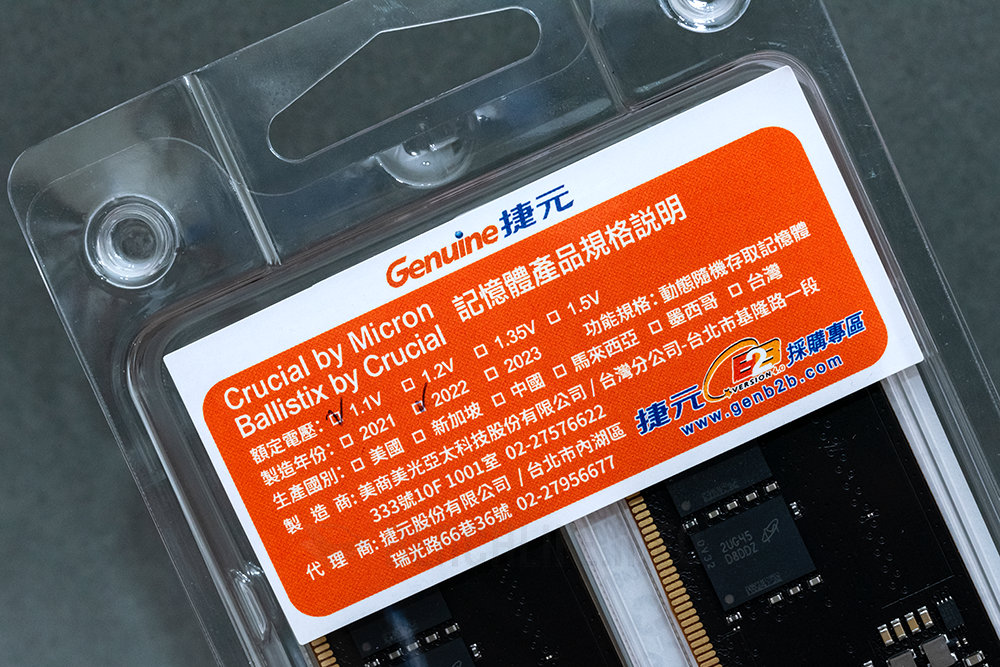
The Crucial DDR5-5600 single module currently only has a capacity of 16GB. Based on factors such as the DDR5 generation process and capacity density, eight 16Gb (2GB) capacity particles are configured on one side of the printed circuit board, which constitutes a 1R (Rank) x8 (Width) type module. . The particle printing code D8DDZ (model MT60B2G8HB-56B:G) used can be roughly seen from the model number, which is the original DDR5-5600.
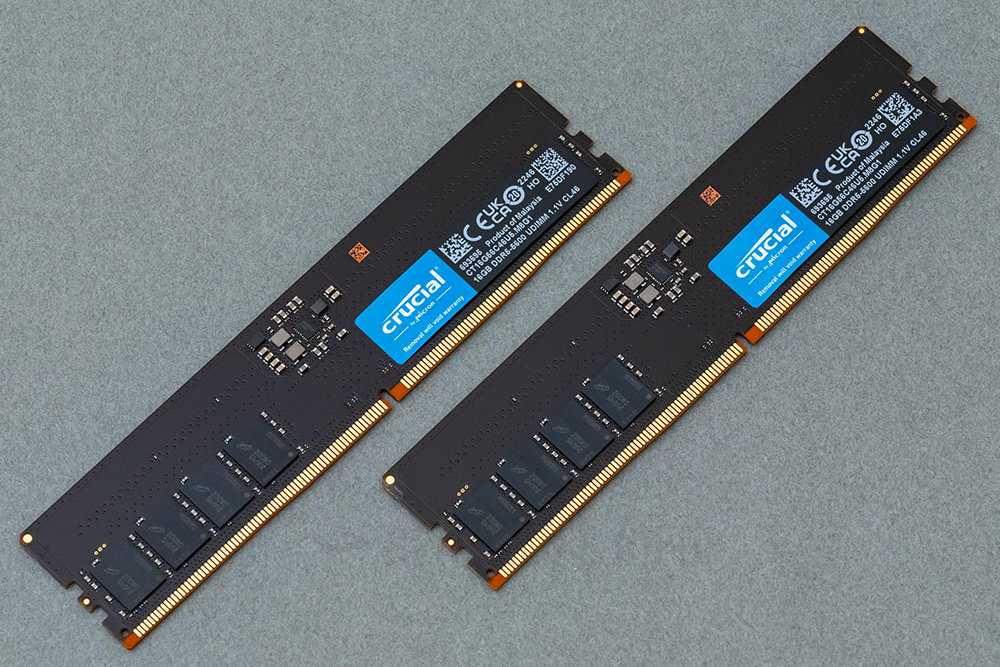
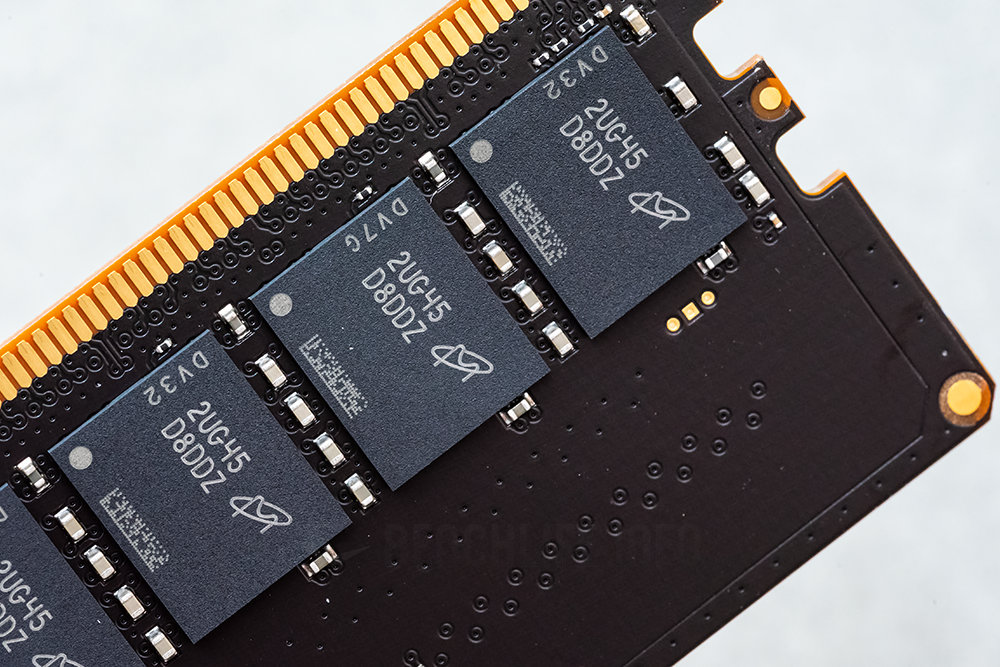
SPD preloaded clock, timing configuration, its timing table is DDR5-5600 46-45-45-90、DDR5-5200 42-42-42-84, this is the case for JEDEC, XMP 3.0, EXPO and other configurations, and all of them only use the 1.1V voltage of the JEDEC standard. Incidentally, there may be some misjudgments when reading SPD information through the firmware/software layer. Let’s not investigate the reasons for the time being. In short, the official specifications shall prevail.
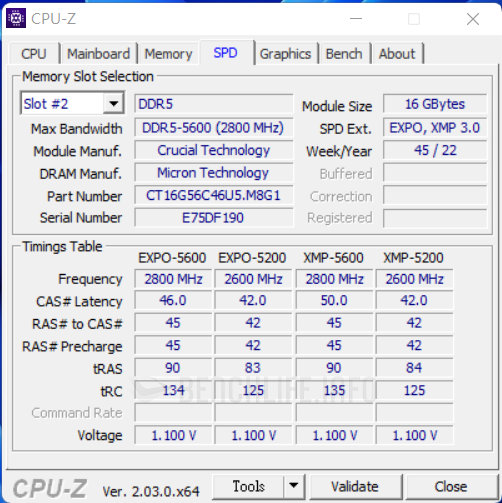
Crucial DDR5-5600 UDIMM actual measurement experience
It is actually used on the AMD Ryzen 7000 platform for default booting. Usually, the memory controller will natively support the specification of DDR5-5200. The actual result depends on the design of the motherboard. At this time, the XMP and EXPO configurations preloaded on the module are just right Can come in handy. As for the Intel 13th generation Core processor platform, the JEDEC DDR5-5600 configuration will automatically take effect, whether to enable XMP or not depends on one’s preference.
To put it bluntly, AMD EXPO is derived from Intel XMP 3.0, and provides optimized configuration settings for its own memory controller characteristics. Motherboard manufacturers generally also provide dual support, such as Crucial DDR5-5600 used in Intel platforms, there is also an opportunity to choose to enable EXPO configuration (depending on the motherboard BIOS design). Vice versa, XMP can also be used on the AMP platform, but it is not necessary.

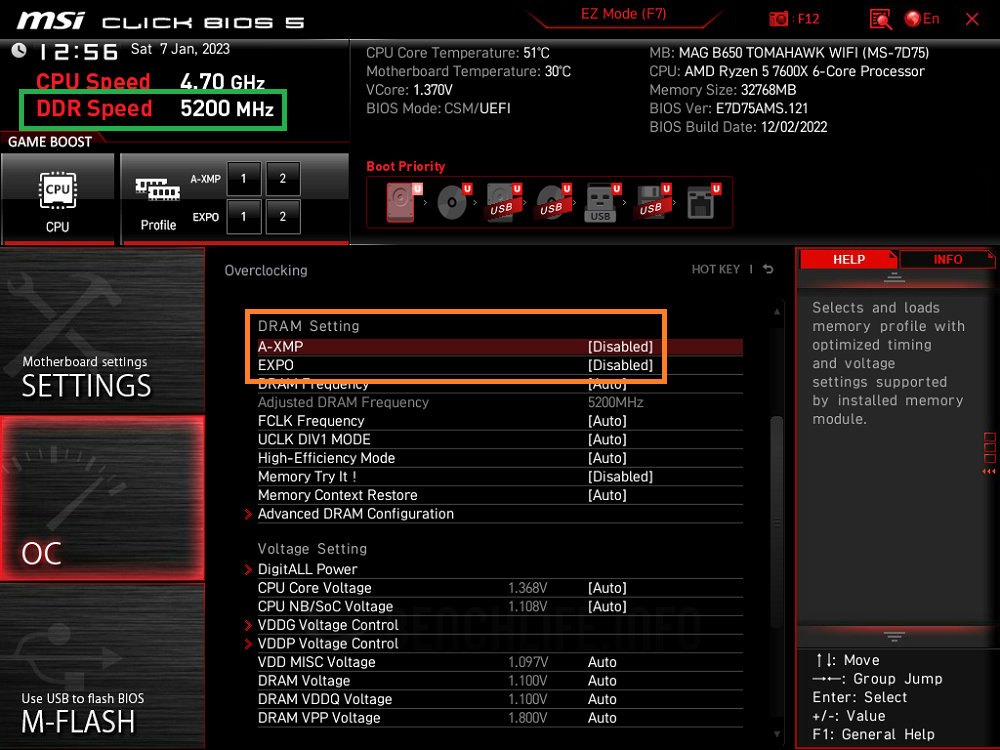
We tested the playability of Crucial DDR5-5600 a little bit. After applying the XMP / EXPO configuration, we manually increased the clock frequency. On the AMD test platform, it can be upgraded to DDR5-6000 without pressurization, while the Intel platform example group is not pressurized. DDR5-5800 (DDR5-6000 @ 1.25V tested to work). Afterwards, the MemTest64 stability test was carried out for 1 hour to confirm the basic feasibility before carrying out the actual measurement. The results are listed in the follow-up.
Of course, whether you want to pursue high clock speed or lower timing, it usually depends on the quality of the processor (memory controller) and the design of the motherboard. We just grabbed some parts and components to make up the platform without any consideration or trade-off, and because of the limited time for previous work, we didn’t try to lower the playability of the timing. In other words, this is not enough to represent the limits of Crucial DDR5-5600, nor can it be said that the AMD platform is more playable.
testing platform
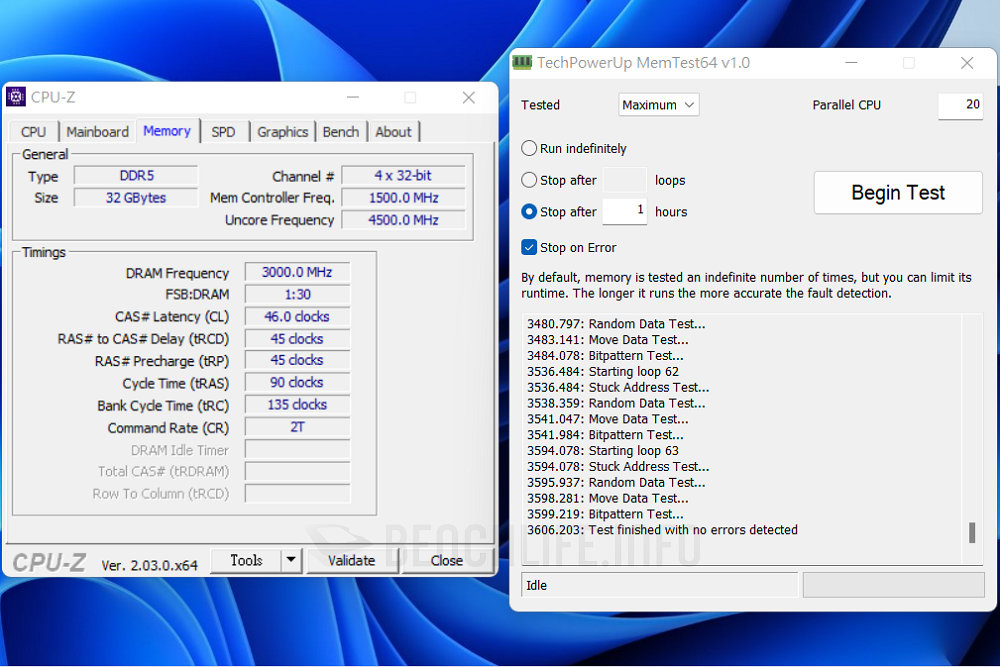
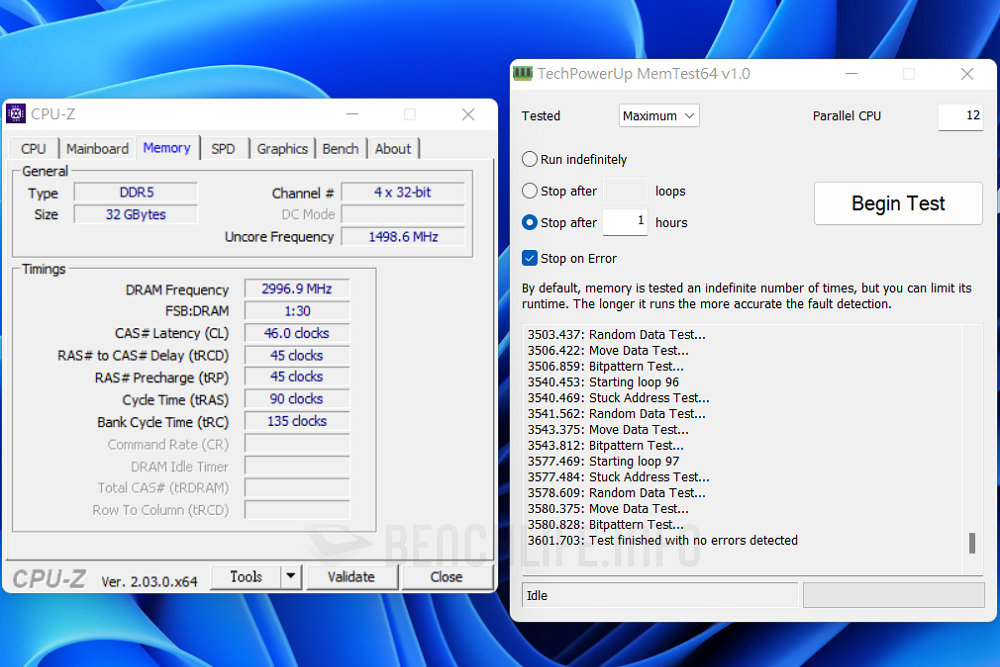
The performance test only takes part of the results as a representative. We use AMD and Intel platforms, and individually test EXPO and XMP 3.0. The timing is as mentioned above: DDR5-5600 46-45-45-90, DDR5-5200 42-42-42-84 , the part that is not overclocked under pressure is also the same. As usual, the data throughput test can always show the difference of the clock pulse of each stage, as for the system simulation test, there are many variables, so there may be dramatic changes.

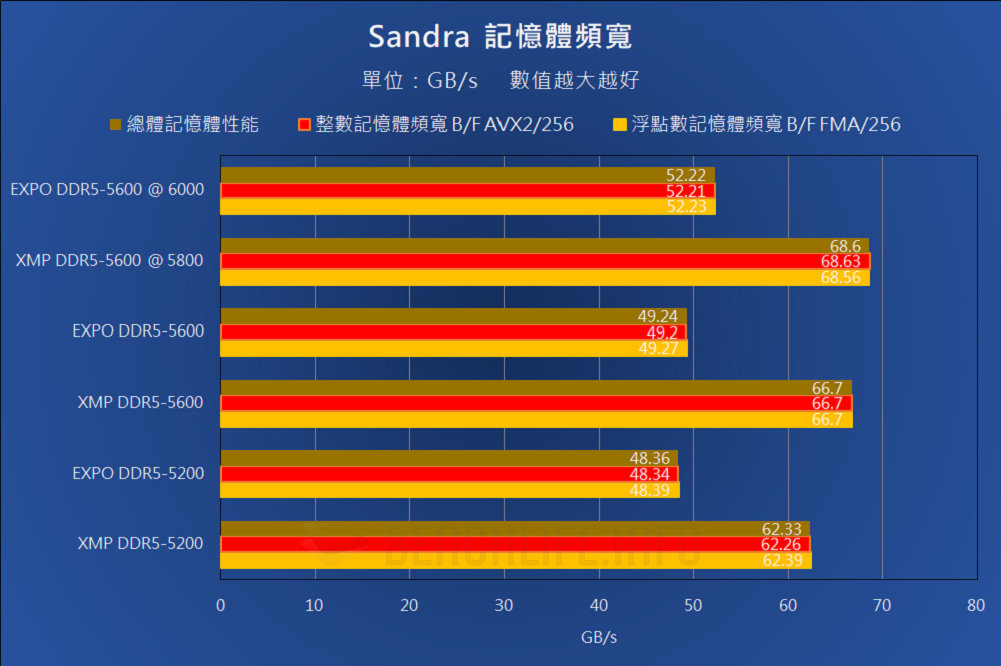
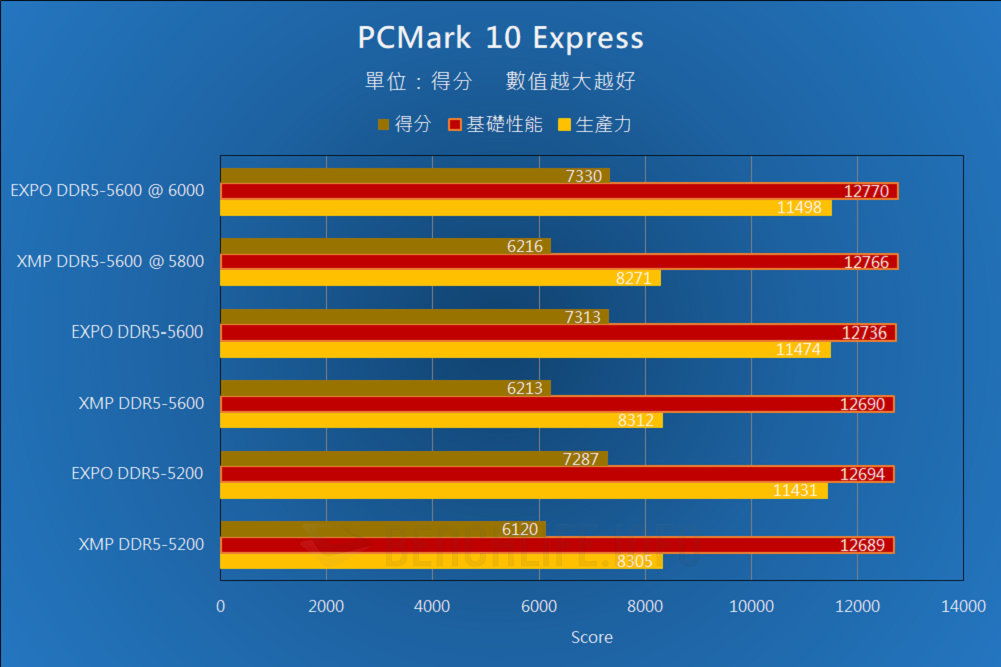

In sum, Crucial DDR5-5600 is a seemingly ordinary native module, and its timing and voltage are set in accordance with JEDEC specifications. But Crucial, by adding EXPO and XMP 3.0 support, provides optimized configuration for the memory controller features of both platforms. It meets the definition of an overclocking module, except that the clock frequency, timing, and voltage are set according to standard specifications, and there is no heat sink.
This may also be another interpretation of Crucial/Micron’s consideration of providing consumers with better convenience, application flexibility, and other considerations after they unexpectedly cut off the e-sports module product line Ballistix. Also because it maintains the price strategy of native modules, it competes with many brands in the market. When there is a demand for native DDR5-5600 / 5200 memory modules, we are happy to recommend it as the first choice.

